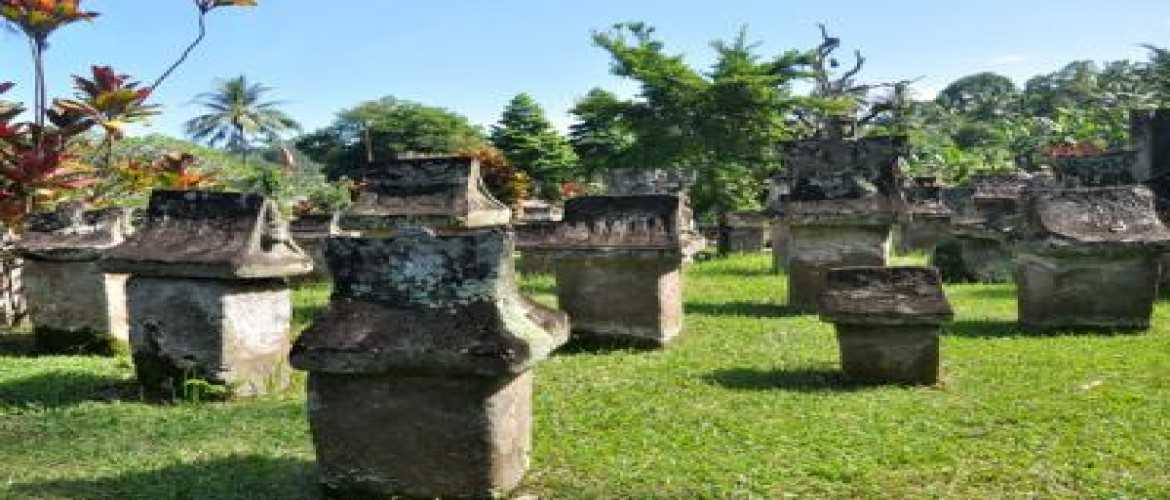
Waruga or an old graveyard, is a relic of megalithic tomb coffin in Minahasa - North Sulawesi that developed in the early 13th century BC. But the emergence estimated on around the 16th middle century. The first Waruga appeared in bukit Kelewer, Treman and Tumaluntung Kabupaten Minahasa Utara and continues to grow in many areas in North Sulawesi until early in the 20th century AD.
According to historical records, waruga derived from Tombulu language, i.e. from words Wale Maruga which means the house of the bodies that will be dry. Meanwhile, in the other means, i.e. Wale Waru or Tomb of Domato (wax soil type). Age of waruga can not be ascertained, because the Minahasa people at that time did not recognize text. However, based on various sources, waruga existed before the time of Christianization or before the 16th century.
Waruga consists of two parts, namely the body and hood. The body part in cube-shaped and the hood in shaped like a roof. Waruga has a function as a place of burial of bodies or people who have died. In the pre-history of the Minahasa people believe that the ancestral spirits have magical powers, so that their graves place should be made as good and as beautiful as possible. The most interesting thing is the waruga was made by the dying person. When the man was going to die then he will naturally enter into waruga he made after being given the completely stock tomb. Later when it was done completely it will bring good for the people who stay behind.
In the North Sulawesi there are many locations that have waruga. The location is called to as site because it contains objects of cultural heritage. At this time the sites were widely available in the village or the fields of population.
Waruga complex now often is also called as Minawanua, Makawale or bekas kampung. In accordance with the beliefs of pre-history people, the sites are mostly located in high altitudes. Waruga Site in Minahasa, especially in Kabupaten Minahasa Utara, among others, are in Desa Treman (368 waruga), Desa Sawangan (144 waruga), Desa Airmadidi Baawah (80 waruga) and also around Desa Kaima, Desa Kauditan, Desa Tumaluntung, Desa Matungkas, Desa Laikit, Desa Likupang, Desa Kawangkoan Kuwil, Desa Sukur, Desa Suwaan, and in other places in Kabupaten Minahasa.
The landscape of Kabupaten Minahasa Utara is alluviasi valley of tufa bedrock. Alluviasi valley was formed by the result of erosion the slopes of Mt. Klabat. The volcano is providing rock material for making waruga.
In waruga (stone grave coffin) will be found various types of objects, which include human bones, human teeth, stoneware clay, metal objects, swords, spears, beads, bronze bracelets, plates, and others. Of the total teeth found in waruga, was allegedly that the tomb coffin is a tomb for some individual or waruga can also be used as common tombs or communal grave. Stoneware objects, bronze, plates, beads and other objects accidentally included as stock tomb for the dying person.
